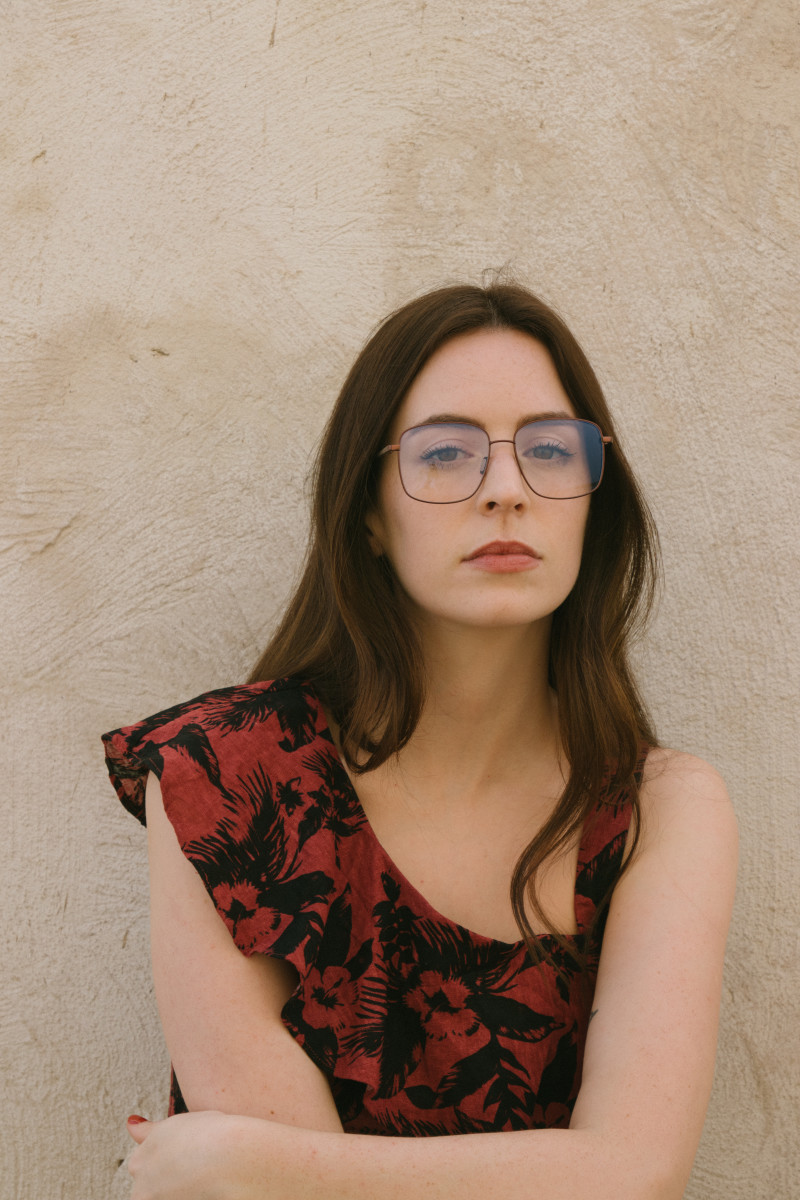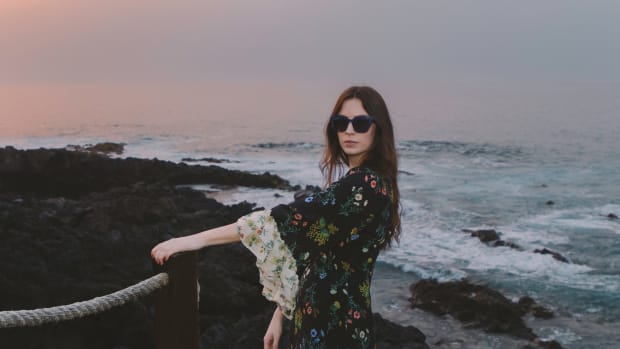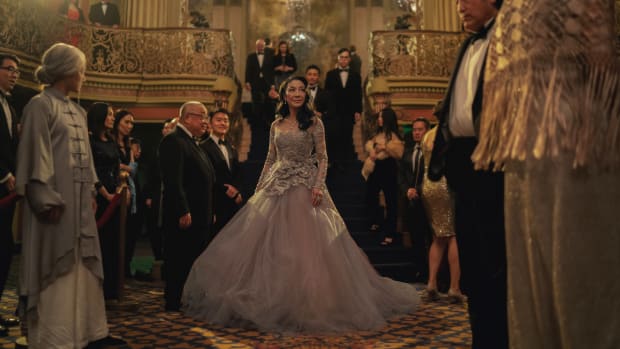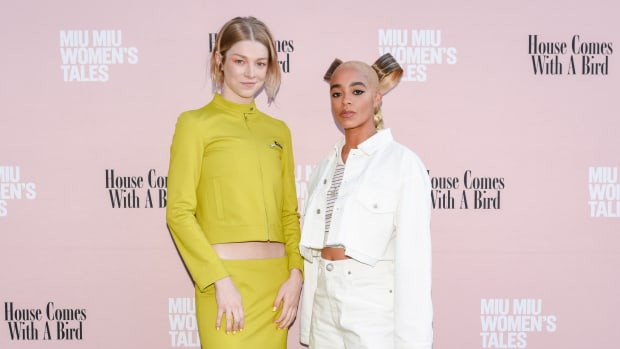We all buy clothes, but no two people shop the same. It can be a social experience, and a deeply personal one; at times, it can be impulsive and entertaining, at
others, purpose-driven, a chore. Where do you shop? When do you shop? How do you decide what you need, how much to spend and what's "you"? These are some of the questions we're putting to prominent figures in our column "How I Shop."
Even at the risk of sounding sounds grandiose, I'll admit: Gemma Styles is the best kind of modern-day Renaissance woman.
Amid a landscape of entrepreneurial multi-hyphenates, the podcaster, mental health advocate and sunglasses designer has forged a career out of her own unique stamp of curious enthusiasm. Tune into "Good Influence," her interview-based podcast show that highlights topics from climate justice to toxic masculinity, and you'll learn she's genuinely passionate about more topics than she isn't.
For the purposes of this website, that, naturally, includes fashion. And not just any old fashion, she'll be quick to remind you, but the type of fashion that doesn't hurt the planet we all share.
"I talk about sustainability quite a lot, but I never want to do it in a preachy way," she explains over Zoom from London, where she's based. "Because even five years ago, let's say, I just didn't know this stuff. It's quite overwhelming, and it's the kind of thing you get into more gradually. When you start learning more about sustainable fashion, I feel like the instinct is to go to a place of shame over what you've been consuming and the different habits you've had for however many years."
She'll be the first to note that her journey toward more mindful consumption has been far from perfect, and that's kind of the point. ("It's better to have a larger proportion of people attempting something imperfectly, than to have 1% of people doing it absolutely perfectly," she reminds me, paraphrasing the "Zero-Waste Chef" Anne-Marie Bonneau.) In her life as a consumer, Styles has put in the work examining her own shopping tendencies. As she says, "Starting to pay attention to why you're buying something is often quite a good first step."
But Styles also resides on the other side of the transaction, and that comes with its own set of responsibilities. With a third collection of her Gemma Styles Eyewear label launching this Friday, she's keen to consider the environmental impacts of the products she puts out into the world. From recyclable packaging to plant-based acetate frames, she says, bases are covered without having to compromise on aesthetic. So far, her favorites include Lake Shore Drive, an oversized tribute to "Tusk"-era Stevie Nicks, and Casanova, 10% of the sales from which are donated to U.K.-based research charity MQ Mental Health.
Ahead, Styles reflects on how her style — and the way she shops — has evolved as she has, from her girlhood days of stealing her mom's sweaters (or "jumpers," as they call them across the pond) to her entrepreneurial priorities as an imperfect environmentalist. Read on for the highlights.
"I don't think I've ever thought of myself as a particularly fashionable person. I don’t think I do anything particularly interesting with clothes. And I feel like if I try to define what I like, I find it quite difficult.
"I'll play a game with myself sometimes, just to figure out exactly what it is that I like and don't like. If I'm sat on the train, I'll look at all the different items people are wearing and — not in a creepy way, and obviously not insulting what anyone else is wearing — ask myself if I'd wear that or not. And so much of the time the answer is no, and then I'm trying to think, What is it about that pair of trainers that makes me go, ‘Oh, no…?’
"If I'm trying to boil it down, I usually wear things that are quite classic, quite casual, but then I try to find something that's a point of interest. Whether that's a more interesting necklace or something's a bit more oversized than it might typically be, or there's a brightly colored shoe in an otherwise toned-down outfit. I'm definitely a jeans-and-a-jumper person — that's my go-to, what I wear for everything. If I had to wear one outfit for the rest of time, it would be classic blue jeans, a black roll-neck jumper and a blazer.
"I'm also not that great at getting dressed up for events. I'd always rather be underdressed than overdressed. I've got a jumpsuit in my wardrobe that I must have had for seven or eight years now that I call my 'everything jumpsuit.' I've worn it to business things where the dress code is business casual and I'm like, 'What the hell does that mean?' I've worn it out to restaurants, I've worn it casually… It's great.
"As a teenager, shopping was an activity for a whole Saturday, where the plan was to go around and buy loads of stuff. I just don't find shopping in person that fun now. I like shopping online, and even more so because I do spend a lot of time browsing Depop and Vestiaire Collective and all those resale markets. There are smaller brands and newer, more sustainable brands you can get online that you traditionally couldn't get in the shop.
"I definitely think through purchases most of the time. Like anyone, I’ve been guilty of an impulse buy, whether I'm panicking because I think I won't look nice or it's been a rough week and I'm trying to find myself a treat. But I'm getting better and better at not doing that. I'm a reasonably frugal person, anyway. I consider stuff a lot more now, and I'm that person who will have something in my basket for a while.
Recommended Articles

Gemma Styles in Gemma Styles Eyewear's "Lake Shore Drive" frames.
Photo: Courtesy of Gemma Styles Eyewear
"One of the impulse purchases I went for at the beginning of this year was this coat. I'd wanted it for two years and never bought it. One, because it was reasonably expensive, and two, because I have a lot of coats and I was like, 'Do I need it?' But it came up on a targeted advert in January and they had one left in my size and it was in the sale. And I was like, 'Do you know what? If I've thought about it for that long and I still want it, I'm just going to get it.'
"In some ways, waiting to buy things makes it more enjoyable when you actually get them. If you get into the mindset of knowing where the gaps are in your wardrobe, then you know if you're going to wear it enough. Now I can look at things and think, 'Oh, I like that, but I'd probably only wear it for a couple occasions.' That's the great thing about rentals: It mitigates some of the impulse-buying because you still get the thrill of the one-off wear without so much of the consequence.
"Up until four or five years ago, even when I was very much interested in sustainability, I honestly didn't think about clothes through a sustainable lens, which now feels really alien. I've never been someone who would throw clothes in the bin. But when I'd have a clear-out, I'd send them to a charity shop. You think of it as doing a good thing, like, 'Well, pat on the back, you've done something nice for a charity.' And that was the end of that. But if everybody does that, there's no possible way all those clothes are then being bought. How can you give that many items to a charity shop and then not shop in charity shops?
"When it comes to buying something new, I'm always wondering, 'How long am I going to have this? What's it made of? Is that material then going to be able to be recycled? Is it going to decompose? How many different materials is it made of? Is it well made enough that I can wear it 30 times? Then will it be in good enough condition to be resold?' I could go on and on, but now as somebody selling products, I'm trying to think quite deeply about the impact of those things. I'm so conscious about what I buy that I obviously want that to be the case for people who are shopping Gemma Styles Eyewear.
"This is the third collection of Gemma Styles Eyewear that I've done. I feel like I've only gotten a bit more confident with what I'm doing, making frames that aren't just going to be in fashion for one season and then disappear. We've been on the model where I put out a collection only once every two years, so I feel like that's a nice pace of slowed-down consumption. I know trends wax and wane with time, but I try to make things that are very wearable. I'm not trying to create stuff that's such an overpowering statement piece that you then have to change what else you're wearing around it.
"At the beginning, even though I was making things I liked, I kept trying to guess what other people wanted. But in the first two collections, we realized that the styles that were selling the best were all my favorites, and that gave me a bit more confidence. The whole point of it being my range is that I get to make them how I'd like. There's a style called 'Goodbye Stranger' that we brought back again. It's great that I just get to decide to do that because I'm in charge of things, which still feels so fun.
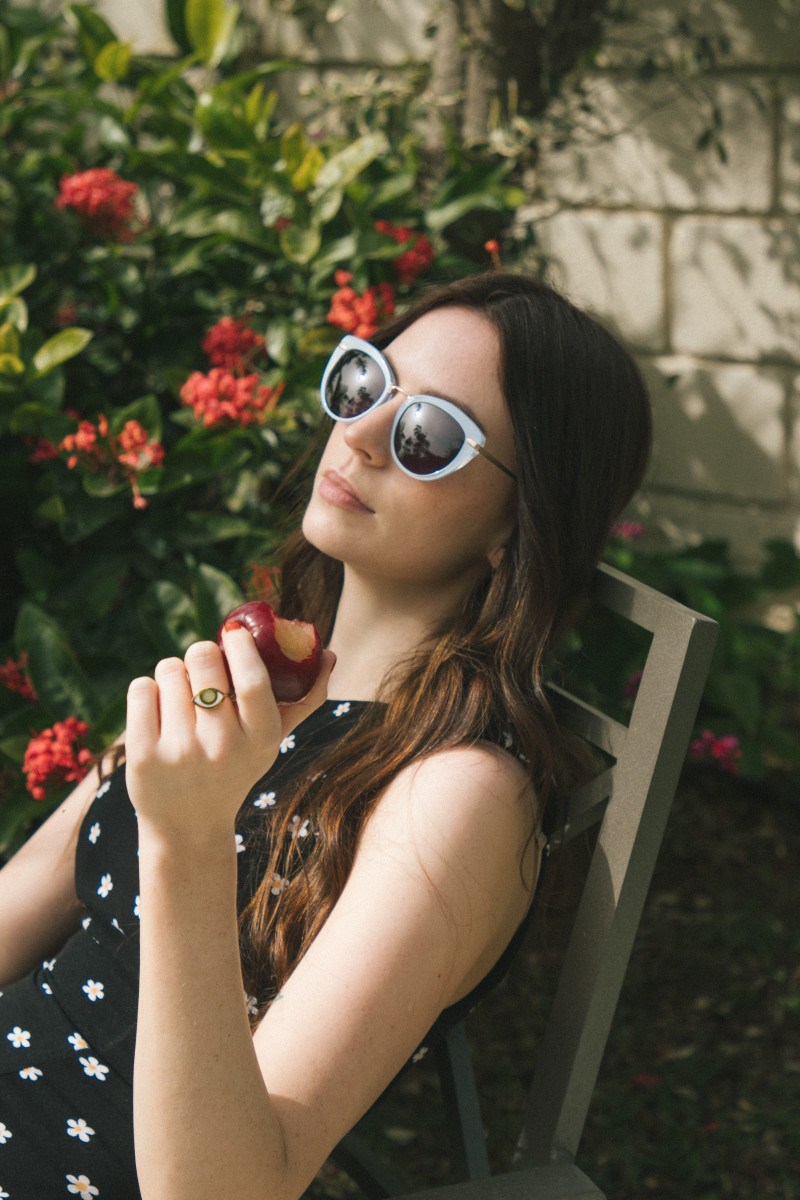
Gemma Styles in Gemma Styles Eyewear's "Let Her Dance" frames.
Photo: Courtesy of Gemma Styles Eyewear
"I've seen a lot of sustainable fashion people say that the most sustainable items of clothing are ones you already own. I have a jumper that was my mom's that she used to wear when I was a small child. I called it the 'poorly jumper' because I always wanted to wear that jumper of hers when I was ill. She was having a clear-out a couple years ago and didn't wear it anymore, so she was getting rid of it and I was like, 'Don't you dare.' Now I wear it even if I'm not feeling ill. But actually, genuinely, it makes me feel ever-so-slightly better.
"I also have a black dress that, again, was my mom's that my granddad bought her for her birthday — let's say 15 to 20 years ago, something like that — and my mom then gave to me when it didn't fit her anymore. When my granddad suddenly died in the second half of last year, I wore that dress to his funeral.
"If you're taking your first step into sustainable fashion, the first thing you can do is nothing. Just stop buying more for a little bit. Try not to feel overwhelmed at the beginning thinking you need to buy a whole new wardrobe of expensive sustainable items. Because what you've already got is already the most sustainable. The more you can wear it and extend its life, the more you can reduce its carbon footprint. I genuinely find more joy in rewearing things for different occasions. It actually makes me really happy. Now the plan is the things I have, I have because I've thought about them and I really like them.
"My big thing would be weddings, always having to have a different outfit for every wedding. And that just adds up. There was one summer, maybe five years ago, when between us, my boyfriend and I went to 11 weddings in one year. That was a lot of outfits. I was that person at one point who would be panic-buying six different dresses to try on and then send the other ones back. But you learn that it's more cost-effective, apparently, for these bigger companies to just throw clothes in a bin rather than clean them, repackage them and resell them again.
"There are a lot of big brands that will do smaller 'conscious' collections. Most of their products won't be sustainable, but then a small selection will be made with organic cotton, for example. You can see they already know there are better materials to use, so why aren't they just using those in general, for everything? Why does it have to be a sub-collection?
"I do understand that not everything every brand makes is going to be 100% sustainable. It's impossible to be a perfect environmentalist. There will be things I buy that aren't 100% biodegradable, that don't tick every box. But it's kind of cool now to mend your clothes, to upcycle them. And that's a good direction we're going in."
This interview has been edited and condensed for clarity.
Never miss the latest fashion industry news. Sign up for the Fashionista daily newsletter.

